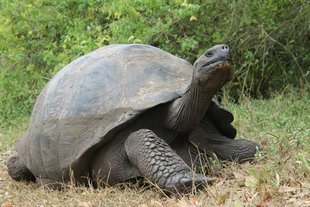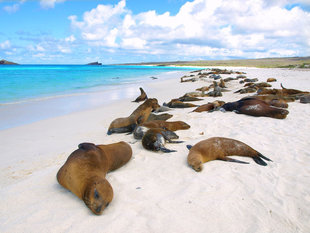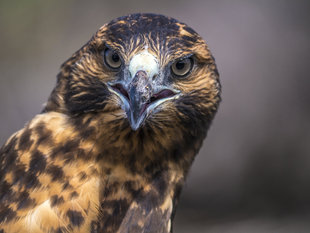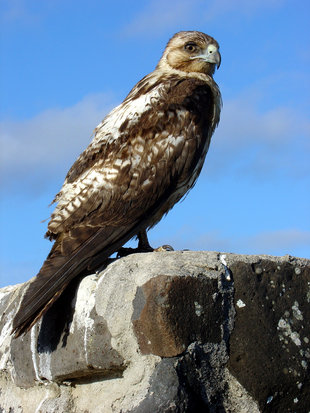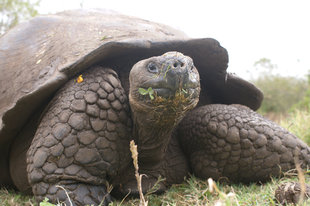Area Size: 23.1 Km²
Maximum Altitude: 777 meters / 2550 feet
Island Highlights: Swallow Tailed Gull, Marine Iguana, Galapagos Hawk, Fur Seal, Giant Tortoise, Project Pinta
Introduction
Pinta is the ninth largest of the Galapagos islands, situated in the northernmost part of the archipelago. The island is probably best known for being the birthplace of world renowned Lonesome George, the last remaining subspecies of Pinta giant tortoise, which has now become a representation of the vulnerability of the Galapagos Islands.
Pinta has no real visitor sites as such, although there are a number of landing sites around the island. All visitors that wish to go ashore on the island will require a special permit from the Galapagos National Park.
Although relatively small in terms of area, Pinta is home to an incredible variety of wildlife, including swallow-tailed gulls, Galapagos hawks and an array of other spectacular birdlife. The island is also a good site for seeing marine iguanas and fur seals.
Today Pinta is a symbol of both the negative impact humans can have, and our increasing capacity to achieve ecological restoration of degraded areas. Such pioneering conservation efforts include Project Pinta: a multi-year project aimed at the restoration of Lonesome George's native island.
Wildlife & Marine Life
Wildlife spotting opportunities on Pinta are many and varied. Although Pinta no longer possesses it own endemic species of giant tortoise, a recent pioneering conservation project has resulted in 39 hybrid tortoises being repopulated to the island. For an island that has for so long been without a giant tortoise population, this groundbreaking project has proved to be an exciting first step for the future of Pinta's biodiversity. Consequently, to witness these new residents on Pinta would not only be a memorable experience, but also a positive sign of things to come.
In terms of birdlife to be seen on the island, swallow-tailed gulls are frequently observed gliding through the skies. A less common bird to look out for is the endemic Galapagos hawk, whose population is in decline and has been classed as "vulnerable".
Conservation Issues
In years gone by, Pinta was home to a considerable population of giant saddleback tortoises, however over time the numbers of this wonderful species gradually diminished as a direct result of poaching by pirates, fishermen and whalers in the 18th and 19th centuries. Today, only one specimen of Pinta Giant tortoise still remains, who appropriately goes by the name of 'Lonesome George'. George, who is thought to have been born in the 1920s, can be visited at his permanent home at the Charles Darwin Research Station on the island of Santa Cruz. He now stands as a constant reminder of how vigilant we must be in order to conserve other valuable and endangered species, not just in the Galapagos, but the rest of the world.
Introduced species have caused detrimental affects to the natural habitats of Pinta. Goats have by far caused the most harm by not only devouring the island's valuable endemic plants and shrubs, but also introducing diseases which have consequently affected local wildlife. However, due to a 30 year long campaign, Pinta, along with five other major islands, has been successful in completely eradicating all of the unwanted goats. Fortunately, it appears that the extreme grazing pressure that the goats brought to Pinta was stopped before any of the endemic plant life became extinct. Furthermore, an extensive coast-to-summit monitoring project carried out in 2000 and repeated in 2004 has revealed that such vegetation has recovered rapidly since the removal of the goats.
Scientists and conservationists are confident that in time, Pinta will be transformed back into an island state reminiscent of its pre-human invasion. Such an ambitious project, which involves the re-population of giant tortoises onto the island has only recently become achievable. Without the substantial amount of new technology and conservation tools developed in the Galapagos over the past 40 years, no such project would be possible.
In May 2010, 39 hybrid giant tortoises were released onto Pinta, which was considered to be an essential step towards re-establishing ecological processes on the island. By way of ensuring that these hybrid tortoises do not compromise any future attempts to re-establish a reproductive population on Pinta, each tortoise was sterilised, then placed in quarantine prior to the big release.
These have been the first giant tortoise residents on the island since the removal of Lonesome George in 1972. This groundbreaking operation was carried out by a team of park ranger, herpetologists, botanists and vets from the Galapagos National Park, Galapagos Conservancy, the State University of New York College of Environmental Science and Forestry and the Houston Zoo. However, the plans for tortoises on Pinta do not end here!
The Galapagos National Park is planning to eventually repopulate Pinta with Española tortoises. This decision was reached after some consideration, with the eventual conclusion that Española tortoises will provide the best possible means of restoring balance to Pinta's ecosystem through reproduction. Studies have shown that Española tortoises possess the taxon most closely related to that of the Pinta tortoise.
The overall repopulation process, which is to be undertaken in two stages, will not be straightforward and will involve extensive planning, monitoring and control. Firstly, an ecological monitoring plan will be implemented to measure changes in the ecosystem following the introduction of the tortoises. Such changes are likely to take years, if not decades to transpire, since the introduced tortoises will be young (approximately 4 years old). It is estimated that natural reproduction on the island will begin in approximately 15-20 years time.
In conjunction with the monitoring process, work will also get underway to remove any remaining invasive plant species from the island. The removal of the foreign vegetation, of which there is estimated to be 20 species, is fundamental to ensure that the presence of tortoises will not lead to further dispersal and germination.
Before the Española tortoises can be released onto the island, many factors must be taken into careful consideration. Recent weather conditions, the amount of green vegetation and habitat use will undergo intensive study prior to the release to determine the most favourable conditions for their immediate survival. Subsequent monitoring will be implemented from the time of release of the tortoises, invertebrates and vegetation. The potential technologies that are being considered for this monitoring include passive integrated transponders (tiny, durable microchips), GPS and radio telemetry technology.
With a carefully planned repopulation project soon to be underway and the successful removal of invasive species from the island, the future of the giant tortoise population is looking bright. Depending on the success of Project Pinta, there may come a time when questions about Lonesome George's future will arise, with the possibility of returning him to his island of origin.
Geology
The island of Pinta is a shield volcano consisting of a number of young cones and lava flows originating from NNW-trending fissures. There is a steep sea cliff which truncates the western side of the volcano. However, the volcano is lacking the distinctive summit caldera similar to those of Fernandina and Isabela Island volcanoes. The fresh, un-vegetated lava flows that cover the south-eastern and northern flanks suggest that there has been an eruption at some point in the last few thousand or few hundred years. More recently, there was an eruption of uncertain nature reported to have occurred in 1928.
Pinta

